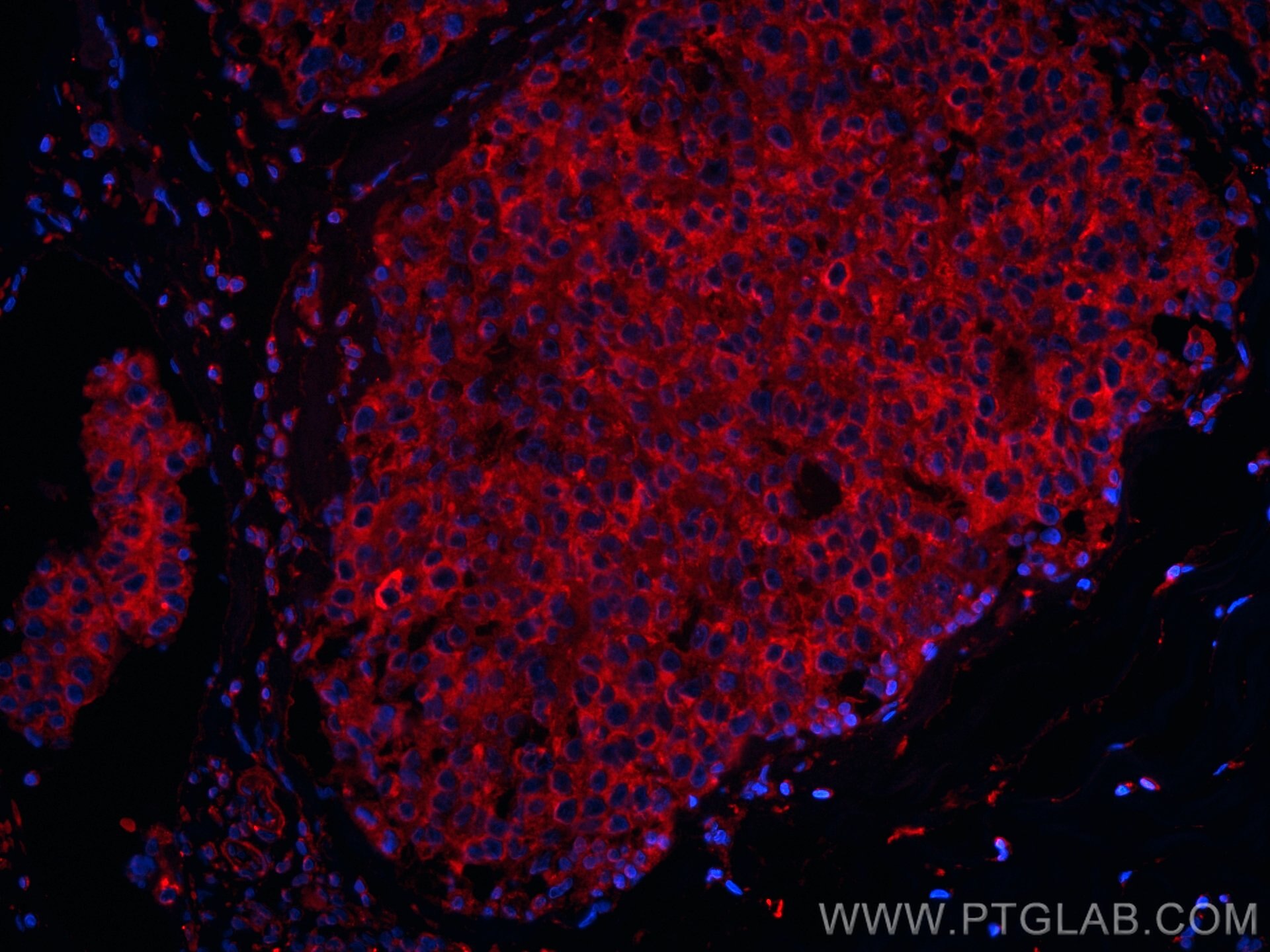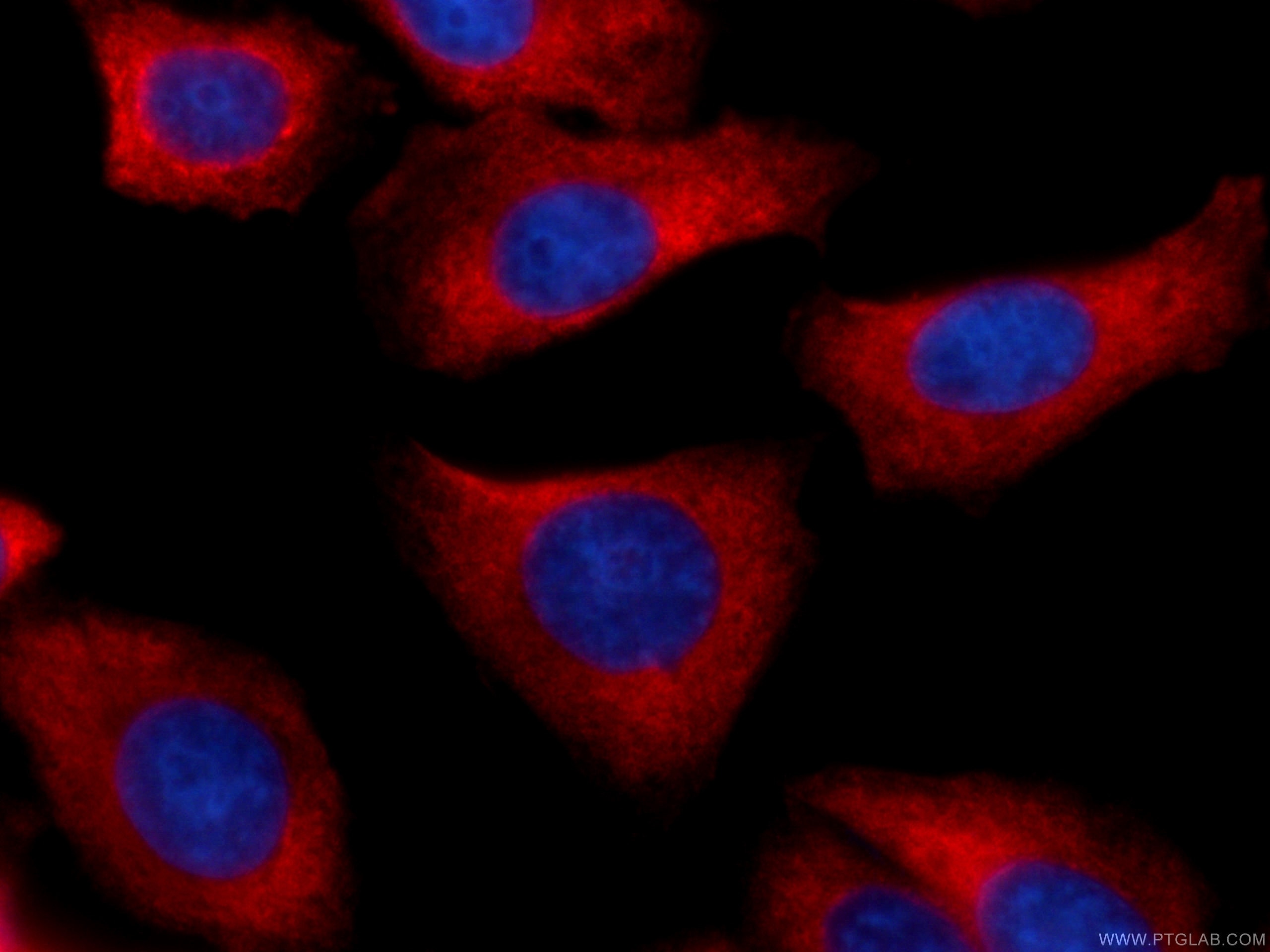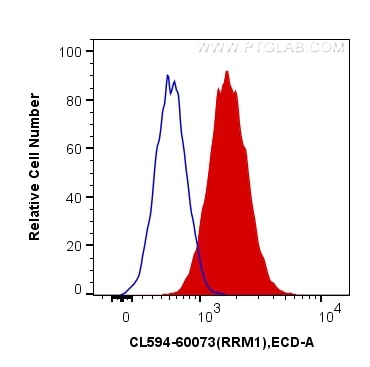- Phare
- Validé par KD/KO
Anticorps Monoclonal anti-RRM1
RRM1 Monoclonal Antibody for IF/ICC, IF-P, FC (Intra)
Hôte / Isotype
Mouse / IgG2b
Réactivité testée
Humain
Applications
IF/ICC, IF-P, FC (Intra)
Conjugaison
CoraLite®594 Fluorescent Dye
CloneNo.
5H6F3
N° de cat : CL594-60073
Synonymes
Galerie de données de validation
Applications testées
| Résultats positifs en IF-P | tissu de cancer du sein humain, |
| Résultats positifs en IF/ICC | cellules HepG2, |
| Résultats positifs en FC (Intra) | cellules HepG2, |
Dilution recommandée
| Application | Dilution |
|---|---|
| Immunofluorescence (IF)-P | IF-P : 1:50-1:500 |
| Immunofluorescence (IF)/ICC | IF/ICC : 1:50-1:500 |
| Flow Cytometry (FC) (INTRA) | FC (INTRA) : 0.40 ug per 10^6 cells in a 100 µl suspension |
| It is recommended that this reagent should be titrated in each testing system to obtain optimal results. | |
| Sample-dependent, check data in validation data gallery | |
Informations sur le produit
CL594-60073 cible RRM1 dans les applications de IF/ICC, IF-P, FC (Intra) et montre une réactivité avec des échantillons Humain
| Réactivité | Humain |
| Hôte / Isotype | Mouse / IgG2b |
| Clonalité | Monoclonal |
| Type | Anticorps |
| Immunogène | RRM1 Protéine recombinante Ag0789 |
| Nom complet | ribonucleotide reductase M1 |
| Masse moléculaire calculée | 90 kDa |
| Poids moléculaire observé | 90 kDa |
| Numéro d’acquisition GenBank | BC006498 |
| Symbole du gène | RRM1 |
| Identification du gène (NCBI) | 6240 |
| Conjugaison | CoraLite®594 Fluorescent Dye |
| Excitation/Emission maxima wavelengths | 588 nm / 604 nm |
| Forme | Liquide |
| Méthode de purification | Purification par protéine A |
| Tampon de stockage | PBS with 50% glycerol, 0.05% Proclin300, 0.5% BSA |
| Conditions de stockage | Stocker à -20 °C. Éviter toute exposition à la lumière. Stable pendant un an après l'expédition. L'aliquotage n'est pas nécessaire pour le stockage à -20oC Les 20ul contiennent 0,1% de BSA. |
Informations générales
Ribonucleoside-diphosphate reductase functions as a heterodimer of a large and a small subunits in deoxyribonucleotide synthesis. RRM1 constitutes to the large subunit (R1) of ribonucleotide reductase, and it can either form heterodimer with small subunit RRM or RRM2B(PMID:16376858). RRM1 provides the precursors necessary for DNA synthesis. RRM1 can not be detected in quiescent cells, while its mRNA and protein are present throughout the cell cycle in cycling cells(PMID:8188248). Researches showed that RRM1 is involved in carcinogenesis, tumor progression, and the resistance of non-small-cell lung cancer (NSCLC) to treatment. Low level expression of RRM1 in NSCLC is associated with poor survival(PMID:17314339).
Protocole
| Product Specific Protocols | |
|---|---|
| IF protocol for CL594 RRM1 antibody CL594-60073 | Download protocol |
| FC protocol for CL594 RRM1 antibody CL594-60073 | Download protocol |
| Standard Protocols | |
|---|---|
| Click here to view our Standard Protocols |




